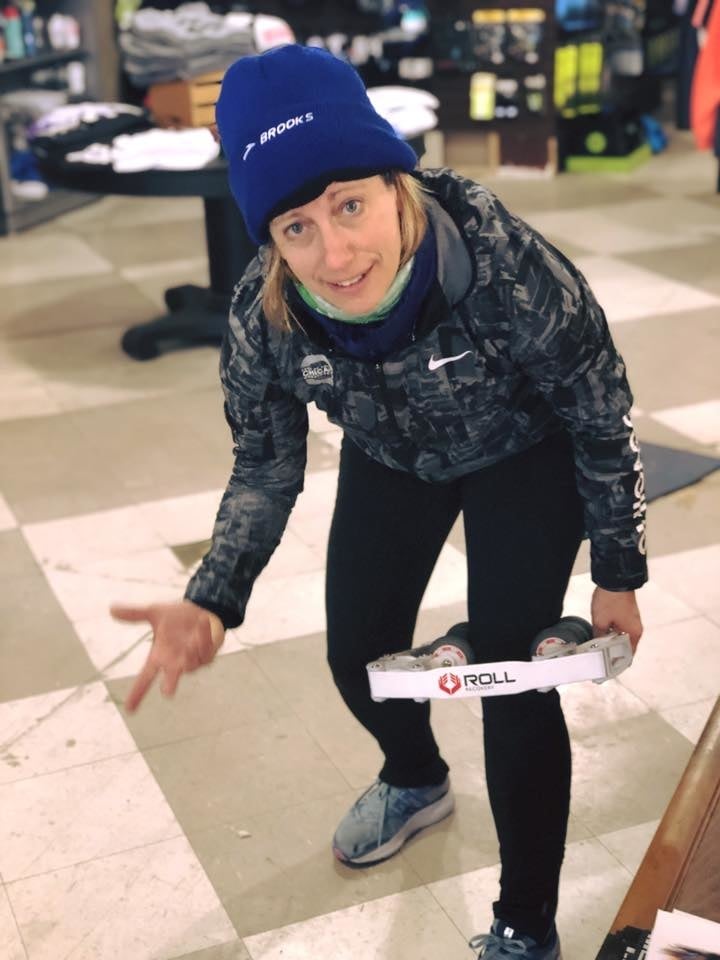Running apparel : Let's get Technical
Let’s Get Technical. Technical.
If you’re a no-fuss-no-muss runner, thinking about what to wear can be a chore. Who sees you anyway? And why are they looking? But while you may be tempted to throw on that cotton t-shirt from Summer Camp at Lake Whaddever and hit the pavement, it might be time to consider the benefits of tech fabrics.
But when you’re shopping for running clothes, it can be hard to sort through the sea of running tights and understand just what you get.
Notice how that old cotton t-shirt is soaking wet and twice its original size after you’ve had a good sweat? Cotton is highly absorbent, so it is happy to collect all your sweat and keep it, gross and clammy, right next to your skin.
Technology in textiles has come a long way since the days of choosing between polyester and cotton. But is all that new technology worth it? Let’s review the two basic types of fabric common in today’s running gear.
Good running clothing aims to help you stay dry, regulate temperature, and prevent chafing. Synthetic fibers (polyester) and natural fibers (merino wool) have properties to help do this. But it depends on the quality of the fabric, and there are pros and cons to each.
So first, polyester. In a nutshell, (sorry to my chemistry teacher father), this is how it works. Polyester is made from synthesized polymers. It’s a “synthetic resin”, plainly put, plastic.
Moisture-Wicking polyester and polyester blends pull moisture from your body to the outside of the garment so that it can evaporate quickly. The weaves and gaps in the fabric allow the moisture to get to the outside layer. So, just because it is polyester doesn’t mean it will wick – there has to be a way for the moisture to get out. Sorry, your old blue leisure suit isn’t going to cut it.
Now, all moisture wicking fabric is not created equal. That’s why it’s important to read labels and talk to your local running gear expert. That way, you’ll understand what you are getting into. Literally.
Polyester wicking fabrics can be prone to stink, even after washing. Bacteria gets into the plastic of the garment, and it’s hard to get out. That’s why some companies add other materials to keep the stink low. Silver, volcanic ash (Minerale), and coconut fibers are some of the ingredients in polyester blends that may make a garment cost a little more, but because these fibers bond to the odor causing bacteria, they wash out easily and stink less. So, for a few more dollars, you can keep your running buddies from running away from you.
So, you know what to look for in synthetic wicking clothing, but guess what? There’s a natural fiber that can do the job too. Merino Wool. Don’t worry, this is not the same wool your grandma used to make you that itchy sweater with the Scottie dogs on it. Merino wool is much different. It comes from merino sheep, which live in extreme temperatures of the Southern Alps. The fleece of a merino sheep is built for the extreme temperature swings. Sound like anyplace you know? Say, Fargo, perhaps?
Merino wool is pretty magical. It keeps you warm in cold weather by using moisture to generate heat. Wavy fibers make tiny air pockets that lock in heat. In warm weather, merino wool transports sweat away from the skin, escaping the fibers to evaporate. There are several merino wool clothing companies, and many are now launching apparel lines specific to running. Icebreaker, Smartwool, and Ibex are at the top of the list when it comes to merino innovation. Oh, and because merino wool resists odor naturally, it doesn’t stink. You can wear it for several runs in a row (believe me, I’ve tested it). So this means less washing, and that’s not a baaad thing.
Of course, this wonder fiber comes at a price. And although the initial investment is more, once people experience merino, they tend to be hooked. Those sheep don’t give their wool away for nothin’
So, when it comes to what to wear, think of it this way: Running is uncomfortable. Especially in the beginning. So if there is anything you can do to make running more comfortable, you should. And the more comfortable you are, the more likely you are to keep running.






